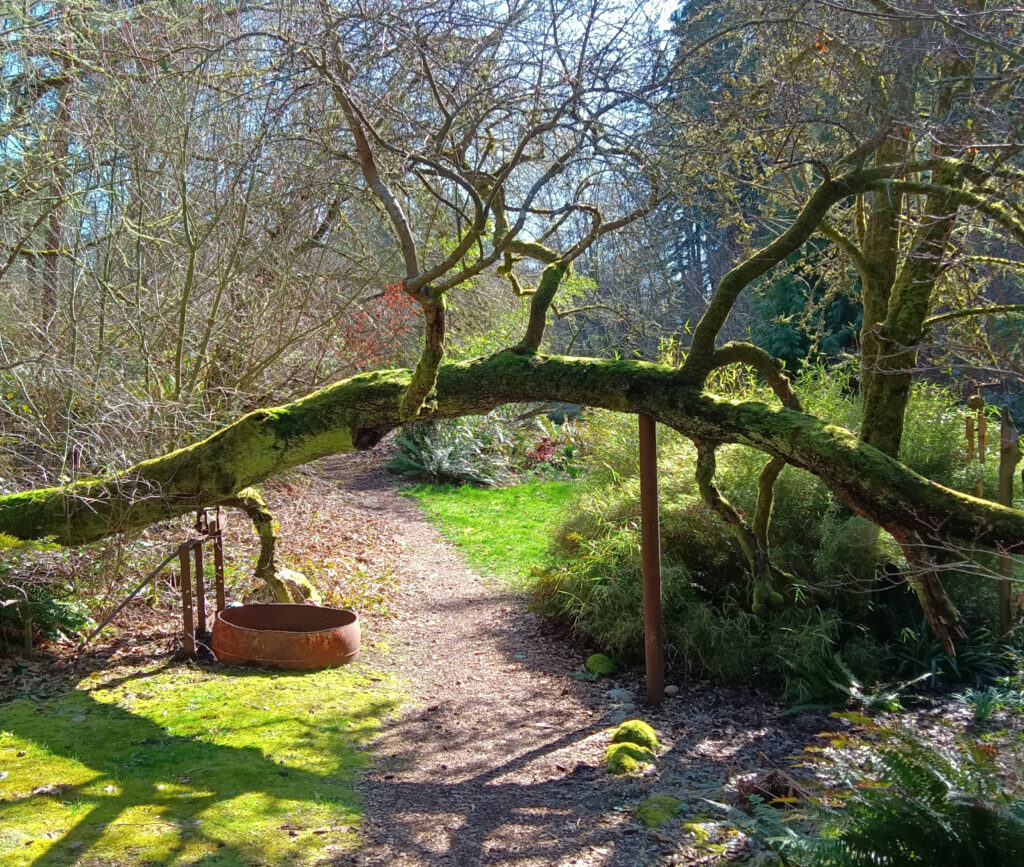By linda c moore
If we go back in time, we will find stories of working collectively on projects, tending to the land, harvesting and storing food. Not long ago, before moving to Vashon in 2010, I lived for 11 years in a community where 12 of us collectively owned and maintained the property. We came together one Saturday a month to “work party.” Twelve people working together can get a lot done.
I’ve thought about those days while tending a garden on my own; one person alone could take a week to do what six can do in a day. I got a taste of this when I needed to move the hoop house in the garden and couldn’t do it alone. I asked a group of friends to help me out, and they showed up. In four years of tending this garden, the most memorable times were when friends came to work with me.
In early 2020, I decided to focus my attention on the place I’ve called home for five years now, and began growing food with the folks I rent from. I am witnessing ways friends can come together, and it makes sense. A group of five families gather once a month to … “get ‘er done.” Each month, they rotate to a new place.
So imagine … twice a year, a group of friends lands at your place, work-gloves and tools in-hand, and all you need is the plan! I gather that you may be thinking about your list of projects …
I asked members if I could interview them, and was invited to this month’s work party. When I showed up, they were in full-swing. I spent a bit of time working alongside Mei, and asked what her favorite part of the day was, “The end.” What happens at the end? “We eat.”
How to start? Members reflected on the importance of coming to a set of agreements and expectations for participation, and with that said, there’s flexibility. I asked Jen and Wendy to share sample agreements: At least one person from each family needs to show up. They rotate who cooks lunch based on who hosted last. And, being open to each other’s visions.
Most everybody in the group has had experience with consensus-based processing. A few shared that they were in an ongoing conversation that had begun about two years ago, around the name “get ‘er done.” Some feel they’d like to have a name that’s not gendered.
What wisdom would you share with others? Seth answered, “At first you think, ‘Oh I can’t do this, because I don’t have skills.’ That’s not the point; it’s about coming together to support each other. Start by tackling blackberry brambles, hauling brush, and planting raspberries.”
How’d y’all begin? Kristen, Nick, Japhy, and Edan moved to the island in 2013, and when they bought a house here they brought their DIY experience – called the Barn-raisers – from their previous house in Seattle. The impetus for starting the group here was based on having more availability through sweat-equity than funds to hire somebody to do the work for them. And because they didn’t have experience with some of the different tasks needed, they were inspired to bring a group of people together for skill-sharing. The group began meeting in fall of 2015. The deep connections that came to be are immeasurable.
Derek shared that when you’re trying to take care of your own place, it can feel overwhelming, but with a group and organization as a host, you can get a lot done. He also likes it when he can just show up and take on a job that he is given. And the tool-sharing is pretty cool.
Other benefits are the kids learning to work together, and camaraderie and community within the group. I got a sense from all members that they’re there because they have a strong community bond.
Katie’s favorite project was the expansion of her garden. As it approached her time to lead, she researched Hugelkultur,* had a fallen willow chopped up, planned the day, and purchased the supplies – a map for success! Right after they finished that project, COVID-19 hit. While it put the group on a year-long hiatus, Katie had a garden to plant seeds and grow her food. But that’s not why she’s there – she’s there for the community.
One of Seth’s favorite project days was at Kim and Abel’s, where they came together to engineer support for an ancient pear tree that leans, in a majestic arch, over one of the main paths. The tree had been slowly relaxing, and because of some very creative engineering, it is now well-supported and safe to pass under. Witnessing this coming-together to support the tree prompted me to write this article.
I wandered over to where Abel and Nick Z were working on a new trellis. I asked Nick what his favorite part was. He reflected on the learning aspect, and how he grew into it. Would he be inspired to do this with a group when he has his own place? He smiled and said, “Yes.”
As I’m listening, I get a sense that these keywords describe their process: cooperation, being able to lead and be led, flexibility, and patience. Derek wisely added – “And a healthy sense of humor!”
Wendy, is there anything else you’d like to add? Her reply – “I think more people should do it, for the connections and care of the land.”
*Editor’s Note: Hugelkultur – literally, “mound culture” – is a traditional technique used in German and Eastern European societies to make mounded raised beds using rotting logs and plant debris that are allowed to compost.

